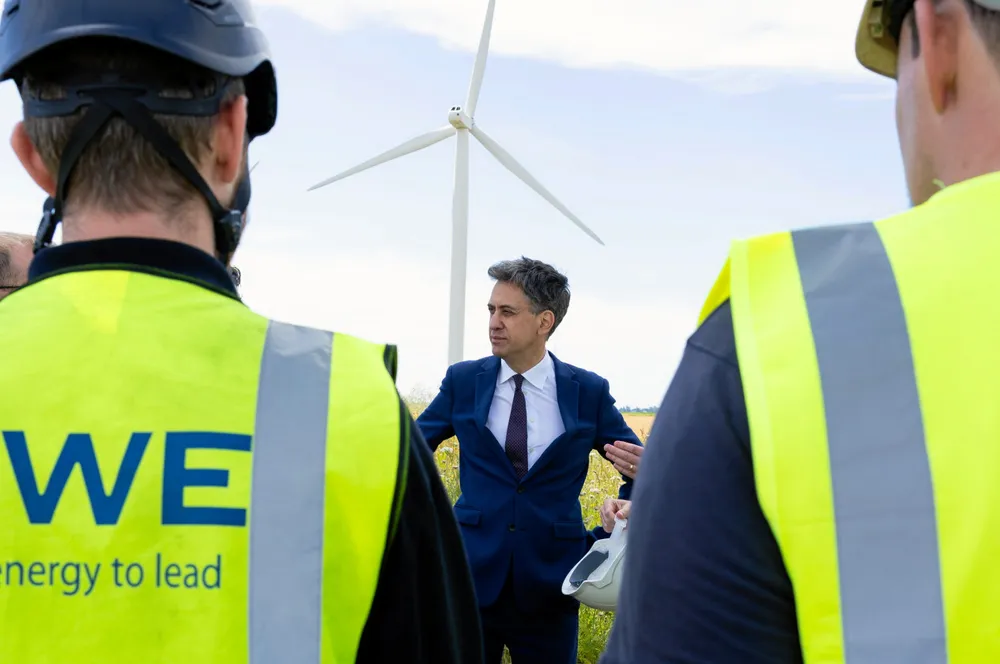Unused UK CfD budget could have supported offshore wind projects that didn’t bid
TotalEnergies, SSE Renewables and Equinor decided not to enter trio of eligible offshore wind projects into recent UK renewable energy auction

Budget that was left unused for offshore wind in the UK’s recent Contracts for Difference (CfD) auction could have supported projects totalling 1.2GW that decided to sit out of the round despite being eligible, new analysis reveals.
At least three offshore wind projects did not bid in the recent renewable energy auction, known as AR6.
The latest UK renewable energy auction, AR6, procured almost 3.4GW of new fixed bottom offshore wind projects.
Another 1.6GW of CfDs were awarded at a strike price of £54.23/MWh to projects that initially won contracts in the 2022 auction, AR4. The government allowed developers to re-bid a portion of the capacity from the AR4 projects amid concerns that economic headwinds facing the sector had rendered their CfDs unviable.
All the projects were bidding into a record-smashing £1.1bn ($1.45bn) budget for fixed bottom offshore wind, set by a newly elected Labour government that wants to quadruple the UK’s capacity to 60GW by 2030.
This is most likely due to the next cheapest project available being too large to fit within the budget, something BVG Associates director Leo Bertels previously described as “bad luck” for the government, especially as around 10GW of projects were eligible to bid.
They included German utility RWE’s Norfolk Vanguard East and West projects, each 1.4GW, and its Awel y Mor project, reported to be as large as 1.1GW. ScottishPower also had its 800MW East Anglia One North in the running.
But now it has emerged that at least three eligible projects, Seagreen 1A, Sheringham Shoal and Dudgeon, which are all extensions of existing operational projects bearing the same name, chose not to bid – and might have been successful if they had.
This is because BVG Associates calculates that the £229.7m of budget left over for fixed-bottom offshore wind could have supported an additional 1,249MW of capacity at the strike price reached for new projects, £58.87/MWh, more than that trio put together.
That is not to say it would have played out in such a clean-cut manner if the projects had bid, explains Bertels.
“As a hypothetical example,” he said that if one of the 1.4 GW Norfolk Vanguard projects “bid just £0.01 over the clearing price, that would have exceeded the auction budget and therefore 'blocked' any of these other projects from clearing if they bid any higher.”
That is even if a project’s bid would have “notionally allowed them to ‘fit’ within the budget due to their smaller size.”
A 500MW project (such as Seagreen 1A) could have theoretically cleared at a maximum strike price of £65.60/MWh, said BVG. This reflects the fact that, had the project entered and been successful at that price, Hornsea 4 and East Anglia Two would have their strike price raised to this new value.
Whether one of those smaller projects could have been successful in AR6 is “purely a matter of speculation,” stressed Bertels, as “we don’t know what the bid of the first project who missed out was, and therefore what the bar for success was.”
Equinor meanwhile chose not to enter its Sheringham Shoal and Dudgeon extension projects because they were not “matured,” said a spokesperson. They also declined to elaborate on this, although it may relate to Equinor having applied in July to expand the projects’ combined capacities from 719MW to 950MW.
RWE declined to comment on whether its trio of projects entered the round. Its UK manager Tom Glover has however lamented the “potential missed opportunity” of AR6, citing the fact it only secured a third of the eligible fixed-bottom offshore wind projects, a comment that would appear out of tune if RWE had decided to bench its trio of sizable projects.
ScottishPower was approached regarding whether it entered its 800MW East Anglia One North project, which could have theoretically also scooped up a contract from the leftover budget at the strike price secured for its neighbour East Anglia Two.
The government handed out 9.6GW of CfDs in total at AR6, including 990MW of onshore wind projects and 3.2GW of solar. There was also a breakthrough 400MW CfD handed out to Green Volt, which is vying to be Europe’s first commercial-scale floating wind project.
(Copyright)